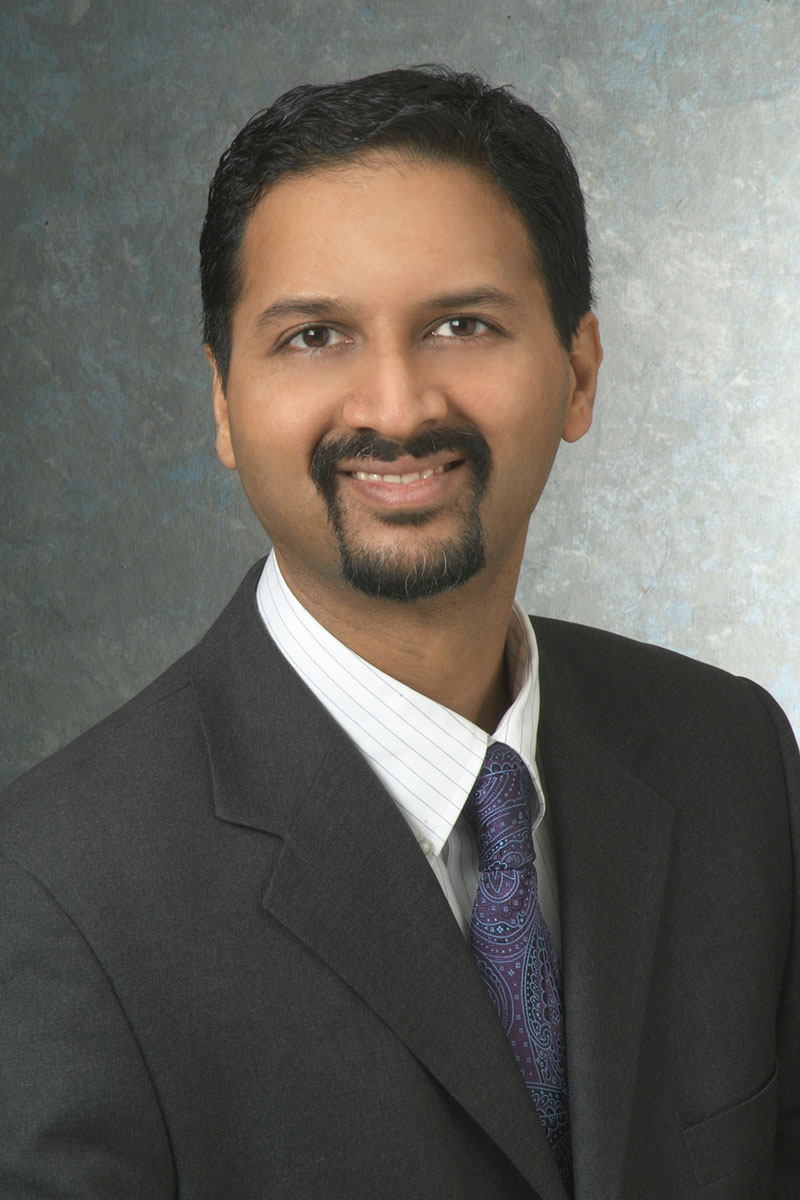
Anant Madabhushi, PhD
Can you introduce yourself?
I am Anant Madabhushi, the Robert Woodruff Professor of biomedical engineering at Emory University and Georgia Institute of Technology. I also have a joint appointment in Biomedical Informatics, pathology and radiology. Apart from that, I’m also a research career scientist at the Atlanta VA Medical Center.
My research interest is in convergence AI and machine learning for problems in precision medicine. Specifically, my group is interested in using routinely acquired data – such as CAT scans, MRI scans, and biopsy images – to interrogate with AI/machine vision-based algorithms and identify patterns that will allow us to predict outcomes and treatment response for patients. Our work spans multiple different disease indications including multiple different types of cancers, cardiovascular disease, and diabetes.
What did you enjoy about winning an award?
My research interest is in machine learning, but I have trained as a biomedical engineer, and I am very proud of that. Biomedical engineering training requires you to think about translation, about the impact of your research work.
You go into biomedical engineering because you want to have impact on people. And to me, this award is a kind of validation of the original choice I made to become a biomedical engineer. It means that there is recognition that the work and the discoveries that we are making in our group are likely to have an impact on patients. And that means a lot. It means more than many of the research projects or academic awards that I’ve received in the past.
Can you tell us a little bit more about the technology/innovation you received the award for?
With this particular project and research interest, we have a partnership with Bristol Myers Squibb (BMS). Together, we are developing algorithms that leverage both radiology and pathology data to be able to predict which lung cancer patients are likely to respond to immunotherapy.
Immunotherapy is expensive and ineffective for about 70% of cancer patients. So, it’s critical to develop new algorithms and approaches to improve our ability to verify which patients are going to respond – or not respond – to these therapies.
The approaches we’re developing in this partnership with BMS will allow us to validate the algorithms we’re developing to identify which patients will or won’t respond to immunotherapy. This means we can more confidently treat certain patients with immunotherapy, and we can think about other treatment or management strategies for patients who won’t respond to it.
While I’m getting the award, it further solidifies and validates this partnership we have with this new pharmaceutical partner. In many ways, it’s also testimony to the fact that Emory is focused on translation and impact.
What does this award mean for your lab or your family?
I am really accepting this award on behalf of my students, my lab, and my trainees. For my students in particular, it further provides validation that what they’re doing is really important. This is a testimony and reflection of the amazing work they have done.
Our partnership with BMS – the fact that they want to work with us, and that they are providing the funding and the data sets for us to validate our algorithms – would not have happened had it not been for tremendous work of my students and trainees. I am glad that my students can see the fruits of their labor; their work is not only going to result in publications, but also tangible evidence of the translational impact of their research. I like the fact that this award is reminding them of their real-world impact.
Additionally, there’s no question that without my family, this would not have been possible. In many ways, this award reflects the sacrifices that my family has made. In particular, I want to call out the sacrifices of my best friend: my partner and wife Dr. Annapurna Valluri. Her support and sacrifices over the last two decades have allowed us to get to this point. I want to thank my in-laws and my parents, all of whom have been extremely supportive. None of this happens in vacuum, and my research journey would never have happened had it not been for all of them.
What are the next steps for this technology?
The next steps are starting to be architected as we speak. The work we’re doing with BMS started as a research endeavor – but to have maximum impact, the research must become a product. Our discoveries have to become tangible deliverables that can impact cancer patients globally. And for that to happen, there has to be a translation vehicle to move this technology forward.
About a year ago, I founded a commercial venture called Picture Health. Picture Health’s mission is to take the discoveries from the lab into the real world to provide decision support tools for physicians, and in turn enabling positive impact on cancer patients.
Several technologies we’ve developed have been licensed to Picture Health. And one of the things I’m excited about is using these tools for AI-driven clinical trials within Emory Healthcare. Being in a university system with its own hospital provides a unique opportunity not only to do innovative research, but also deploy these tools clinically within the Emory medical ecosystem.
As I look two to three years out, my hope is that the results of the research will get implemented locally. We can start with clinical trials, but then scale up to a national and international level through our commercial partner. I hope the research will impact as many cancer patients as possible, both here in the US and globally.
Do you have one word to describe your feeling winning this award?
Ecstatic.
Join us for the 17th Annual Celebration of Technology and Innovation on March 23, 2023! RSVP here: bit.ly/RSVP-OTT.